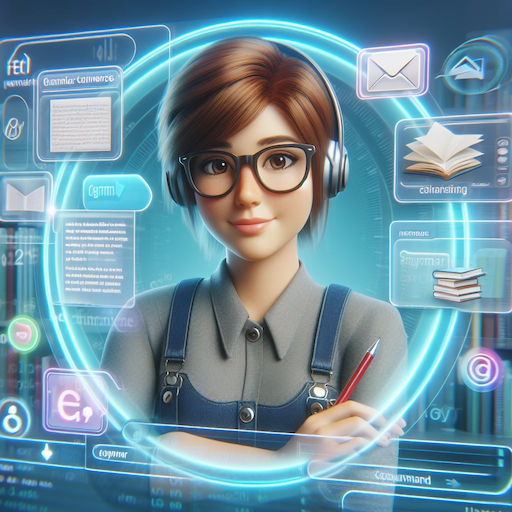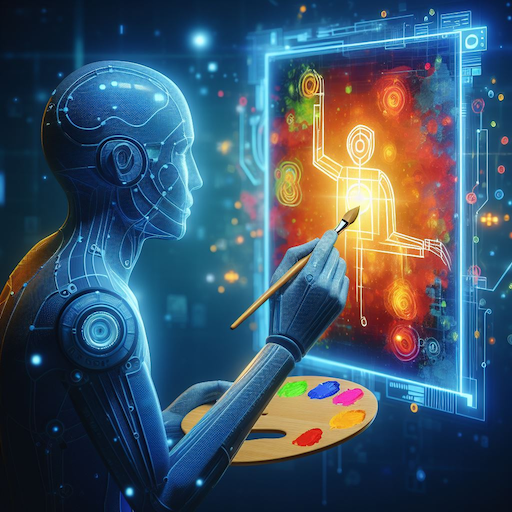Three Concepts for Generative AI in Language Education
Bill Price, with AI assistance
Images generated by DALL·E 3 via Microsoft Copilot
Note: This document was the digital handout for my portion of the panel presentation “Language Instruction and Generative AI: A Report and Discussion,” April 12, 2024, Technology in Language Teaching Forum, Robert Henderson Language Media Center, University of Pittsburgh.
Introduction
I’m Bill Price, an ESL instructor with a passion for integrating technology into language instruction. I run a free, public GitHub repository called LLM Prompts for Education. Recently, I led a workshop titled “Let’s Demystify AI and Take Initiative,” where we explored the potential of generative AI in enhancing both teaching and learning experiences.
I firmly believe that as educators, it’s crucial for us to engage and experiment with generative AI tools. This proactive approach ensures we have a seat at the table as the repercussions of these emerging technologies continue to manifest, allowing us to advocate effectively for our working conditions as well as the learning environments of our students.
Today, I’m happy to share with you three key concepts that have significantly influenced my teaching practice and my students’ learning experiences. These concepts aren’t just theoretical; they’re practical applications that I’ve been personally developing and testing.
Follow along here: https://tinyurl.com/bp3concepts
Concept 1: AI Agents
What is an AI Agent?
-
An AI Agent acts as a human-like digital assistant, performing tasks or offering services as a human would
-
Agents can learn and adapt continuously, enhancing their ability to meet the user’s needs over time
How is that different from regular ChatGPT?
-
What makes an AI Agent special is that you give it a job description in advance so that it knows what its role is and how it should interact with you.
-
Creating an AI Agent is as simple as “writing the job description.”
Imagine: a virtual writing coach

See: Writing Coach
-
A flexible writing tutor designed to provide personalized feedback and guidance to students
-
Designed to help students maintain academic integrity
-
Efficacy has not been directly studied since the interaction is directly between student and AI Agent (teacher not “in the loop”)
Concept 2: Generative Materials Creation
As the name suggests, “generative AI” (such as ChatGPT) specializes in generating and modifying content.

Imagine: generating texts that incorporate target vocabulary
See: Generate Vocabulary Sentences
-
Concept:
-
you feed a list of target vocabulary into the chat, along with a target text complexity level;
-
the AI suggests three possible themes for a text;
-
the AI produces the text you request
-
Imagine: generating images to illustrate target vocabulary
See: Generate Vocabulary Images
-
Concept:
-
you give the AI a word or concept to illustrate;
-
the AI suggests three possible ideas for an image;
-
the AI produces the image you request
-
legal note: as of April 2024, AI-produced images remain ineligible for copyright in the USA (see, e.g., the Théâtre D’opéra Spatial decision), so there are no intellectual property restrictions on their usage (no need to get permissions or pay royalties). It is possible that this copyright doctrine may change in the future.
-
Concept 3: AI Grading Assistant
Imagine: a grading assistant that can draft written feedback on student work

See: Assessing Real Student Work with an Offline LLM
-
The above page documents my experiment in assessing student work with AI assistance
-
I installed a Large Language Model similar to ChatGPT on my own Pitt-issued computer and ran it “fully offline” to ensure full protection of privacy
CAUTION: RESPECT OUR LEGAL RESPONSIBILITIES TO OUR STUDENTS
-
FERPA Compliance: The Family Educational Rights and Privacy Act (FERPA) protects the privacy of student education records. As an instructor, you must never input student work or student information into any tool or software unless it is confirmed to comply with FERPA regulations.
-
My suggestions:
-
Never enter student work or info into any commercial AI product, whether free or paid, unless Pitt has cleared it for us
-
Only use fully-offline, local AI tools such as GPT4All to perform tasks with student work or student information
-
Conclusion
Through AI Agents, Generative Materials Creation, and Grading Assistants, we’ve glimpsed the future of educational tools—tools that are not only innovative but also practical and within our grasp. I encourage you, fellow educators, to explore these tools further, to experiment with them in your teaching, and to share your discoveries and insights.
Together, we can advocate for ways of using these tools to enhance our working conditions as well as our students’ learning conditions. We canlead the charge in transforming language education for the better, preparing our students not just for the future of learning, but for the future of thinking and communicating in a rapidly changing world.
Additional Resources
Prompt engineering and repositories
- Here is one common framework for how to assign a task to a conversational AI:
- Tell it who you are. Example: “I’m an ESL instructor developing study materials.”
- Tell it what the project is. Example: “I’m looking for texts that effectively illustrate the meanings of target vocabulary words for my students.”
- Tell it what you want it to do. Example: “I want you to write a paragraph that uses each of these target vocabulary words one time.”
- Tell it how to write the output. Example: “The paragraph should be about … The level of complexity should be … Use/avoid this grammar …”
-
How to Write Better ChatGPT Prompts: Article and video by Leila Gharani with specific tips and examples for writing more effective prompts
-
LLM Prompts for Education: Bill Price’s repository of prompts.
-
Fabric: A repository of prompts by Daniel Miessler. They are not specific to education, but provide excellent examples of what an engineered prompt can look like. See some of Miessler’s examples below:
-
Create Keynote prompt that instructs the AI to create a slide-by-slide plan for a presentation
-
Extract Wisdom prompt that instructs the AI to “extract surprising, insightful, and interesting information from text content”
-
Chat-Based Generative AI Tools (as of April 2024)
Commercial (online)
-
ChatGPT: A conversational AI developed by OpenAI, capable of generating human-like text responses. It’s known for its wide range of applications, from answering questions to writing creative content.
-
Google Gemini: A conversational AI developed by Google, designed to provide information and perform tasks through natural language understanding.
-
Microsoft Copilot: Microsoft’s conversational AI assistant that integrates with various Microsoft products to enhance productivity by automating tasks, generating content, and providing insights based on natural language prompts.
Open-Source (offline)
-
GPT4All: A free program for downloading and running open-source conversational AIs locally on your own computer. As of March 2024, I recommend using the model called Nous Hermes 2 Mistral DPO.
-
LM Studio: Similar to GPT4All, but considered to be less user-friendly and more advanced.
Image-Based Generative AI Tools
-
DALL·E 3: Powers the image creation of ChatGPT and Microsoft Copilot.